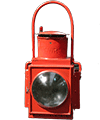Bit of advise, any ideas?
-
sammakins
Bit of advise, any ideas?
Hi all,
For my saw mill layout im in need of some line shafting as used to drive machinery, is anyone aware of any kits available or cast/ etched wheels suitable? Im aware of the wills workshop kit but its very limited in sizes. Failing being able to find something suitable does anyone have any ideas how to make some?? Secondly does anyone have any idea what can be used for the belts?
Any help would be greatly appreciated,
Thanks Sam.
For my saw mill layout im in need of some line shafting as used to drive machinery, is anyone aware of any kits available or cast/ etched wheels suitable? Im aware of the wills workshop kit but its very limited in sizes. Failing being able to find something suitable does anyone have any ideas how to make some?? Secondly does anyone have any idea what can be used for the belts?
Any help would be greatly appreciated,
Thanks Sam.
You do not have the required permissions to view the files attached to this post.
-
Paul Willis

- Forum Team
- Posts: 3043
- Joined: Sun Jul 20, 2008 6:00 pm
Re: Bit of advise, any ideas?
sammakins wrote:Secondly does anyone have any idea what can be used for the belts?
Any help would be greatly appreciated,
Thanks Sam.
Hi Sam,
I believe that the standard answer for drive belts is thin cartridge paper, suitably coloured with watercolour paint. Cheap, infinitely made to size, etc.
Unless you want to make the damn things move, that is...
HTH
Flymo
Beware of Trains - occasional modelling in progress!
www.5522models.co.uk
www.5522models.co.uk
-
grovenor-2685

- Forum Team
- Posts: 3921
- Joined: Sun Jun 29, 2008 8:02 pm
Re: Bit of advise, any ideas?
I've a feeling I've seen these sorts of scenic items in transatlantic publications, maybe Fine Scale Miniatures, Grandt line or similar.
Regards
Keith
Regards
Keith
-
shipbadger
- Posts: 163
- Joined: Sun Jul 20, 2008 3:00 pm
Re: Bit of advise, any ideas?
Hi all,
Another suggestion for the belting is old cassette, audio or video tape. Probably stronger than paper if it receives an accidental knock.
Tony Comber
Another suggestion for the belting is old cassette, audio or video tape. Probably stronger than paper if it receives an accidental knock.
Tony Comber
-
Terry Bendall
- Forum Team
- Posts: 2424
- Joined: Sun Jul 27, 2008 7:46 am
Re: Bit of advise, any ideas?
Many years ago, up until 1966, my father, who ran a small engineering business, had an overhead lineshaft drive for some of the machines. The belts were 2 inches wide and about 1/4 inch thick. The ones in the picture look to be about this size. In some situations the belts could be much wider. Father had a job to do once in a laundry where the machines were driven from an overhead line shaft with the power coming from a twin cylinder vertical steam engine. The primary drive from the steam engine to the first part of the line shaft had belts about 10 or 12 inches wide and 1/2 inch think. His job was to install an electric motor and multiple vee belt drive to replace the flat belts and the steam engine.
In use the countershaft for each machine had what is called stricking gear to more the belt from a pulley fixed to the shaft to an adjacent one which was loose. This allowed the drive to the machine to be stopped. You can see this at the top centre of the picture. The pulleys in the picture look like they have steel rims with some having cast spokes. Some installations had wooden pulleys. The pulleys were often in two halves split along the diameter and bolted together. This allowed a pulley to be added or removed from the line shaft without taking it all down.
If I were making such a thing in model form I would use thin walled brass tube for the pulley rims, brass rod or wire for the spokes, and then a piece of brass for the boss. Curved spokes could be cut from brass sheet using a piercing saw and filed smooth. A lathe and a drilling machine would be helpful. I would drill holes in the boss and rim so that the spokes could be located before soldering everything together. The suggestions made for belts so far are useful although I am not sure how you would join the ends of audio or vidio tape. Probably best to make the joint on a pulley and use double sided tape. Dave Rowe in his book Industrial and Mechanical Modelling, published by Wild Swan (1990) suggested using typewriter ribbin for a conveyor belt and this might do for flat belting although you would probably have to cut it down in width. Finding such a thing might be difficult. Another way is to use Tamiya masking tape which is available in different widths and would join itself.
Stuart Turner, www.stuartmodels.com, who sell kits and bits for making live steam stationary engines sell pulleys and belting for a workshop model but probably too big for 4mm scale.
Terry Bendall
In use the countershaft for each machine had what is called stricking gear to more the belt from a pulley fixed to the shaft to an adjacent one which was loose. This allowed the drive to the machine to be stopped. You can see this at the top centre of the picture. The pulleys in the picture look like they have steel rims with some having cast spokes. Some installations had wooden pulleys. The pulleys were often in two halves split along the diameter and bolted together. This allowed a pulley to be added or removed from the line shaft without taking it all down.
If I were making such a thing in model form I would use thin walled brass tube for the pulley rims, brass rod or wire for the spokes, and then a piece of brass for the boss. Curved spokes could be cut from brass sheet using a piercing saw and filed smooth. A lathe and a drilling machine would be helpful. I would drill holes in the boss and rim so that the spokes could be located before soldering everything together. The suggestions made for belts so far are useful although I am not sure how you would join the ends of audio or vidio tape. Probably best to make the joint on a pulley and use double sided tape. Dave Rowe in his book Industrial and Mechanical Modelling, published by Wild Swan (1990) suggested using typewriter ribbin for a conveyor belt and this might do for flat belting although you would probably have to cut it down in width. Finding such a thing might be difficult. Another way is to use Tamiya masking tape which is available in different widths and would join itself.
Stuart Turner, www.stuartmodels.com, who sell kits and bits for making live steam stationary engines sell pulleys and belting for a workshop model but probably too big for 4mm scale.
Terry Bendall
-
randallb

- Posts: 35
- Joined: Sat Dec 06, 2008 4:39 pm
Re: Bit of advise, any ideas?
These were also to be found on many farms of all sizes from the advent of tractor power. The tractor had an idler drum on one side which would take a belt - width was variable dependant upon what was at hand. My grandparents farm used a take off belt of a double lapped heavy denim like material some 4 inches wide whearas my uncle on a more'modern' farm had a thinner narrower belt of a material I can't recall.
In both cases though, there was far less gearing than pictured, and their purpose being to grind their arable crops to supplement dairy cattle diet and improve milk yields.

In both cases though, there was far less gearing than pictured, and their purpose being to grind their arable crops to supplement dairy cattle diet and improve milk yields.
Randall
-
grovenor-2685

- Forum Team
- Posts: 3921
- Joined: Sun Jun 29, 2008 8:02 pm
Re: Bit of advise, any ideas?
Picking up on Terry's
https://www.eileensemporium.com/index.php?option=com_virtuemart&page=shop.browse&category_id=288&Itemid=9
Keith
maybe a fret like this one would give a headstart on the spokes.. Curved spokes could be cut from brass sheet using a piercing saw and filed smooth.
https://www.eileensemporium.com/index.php?option=com_virtuemart&page=shop.browse&category_id=288&Itemid=9
Keith
-
David B

- Posts: 1511
- Joined: Sun Jul 20, 2008 5:30 pm
Re: Bit of advise, any ideas?
grovenor-2685 wrote:I've a feeling I've seen these sorts of scenic items in transatlantic publications, maybe Fine Scale Miniatures, Grandt line or similar.
Regards
Keith
Picking up on this, there are some images on this Australian site
David
-
dave_long
- Posts: 65
- Joined: Mon Feb 02, 2009 9:21 pm
Re: Bit of advise, any ideas?
There are numerous saw mill kits available for US/Aus prototypes. Another item to consider for the belts which is popular in the US is brown paper.
Try a US google search for sawmills in HO.
Try a US google search for sawmills in HO.
-
Andy W

- Posts: 884
- Joined: Thu May 21, 2009 8:11 am
Re: Bit of advise, any ideas?
Obvious, but might be worth looking at Grandt Line's site: http://www.grandtline.com/products/mrr/mrr_home.html
Make Worcestershire great again.
Build a wall along the Herefordshire border and make them pay for it.
Build a wall along the Herefordshire border and make them pay for it.
-
dave_long
- Posts: 65
- Joined: Mon Feb 02, 2009 9:21 pm
Re: Bit of advise, any ideas?
I know that this is for a engine flywheel and O gauge but here's a US tutorial that might be worth a read.
http://shortlinemodelers.com/structures ... n-flywheel
http://shortlinemodelers.com/structures ... n-flywheel
-
steve howe

- Posts: 912
- Joined: Sun Feb 01, 2009 10:16 pm
Re: Bit of advise, any ideas?
This probably won't be much use in sourcing components, but the quality of modelling by Chuck Doan is exemplary and features many interior workshop and machine tool cameos:
http://public.fotki.com/ChuckDoan/model_projects/
http://public.fotki.com/ChuckDoan/model ... crope.html
Almost enough to make you go 7mm!
Steve
http://public.fotki.com/ChuckDoan/model_projects/
http://public.fotki.com/ChuckDoan/model ... crope.html
Almost enough to make you go 7mm!
Steve
-
doktorstamp
- Posts: 73
- Joined: Sat Oct 02, 2010 9:07 am
Re: Bit of advise, any ideas?
A method once used, and this is an example of cross-fertilisation from other interests, was to plasticise paper/tissue.
It was (is?) used extensively by the Military Modelling fraternity, and involved the use of a substance (another word that has taken on sinister connotations) called Inhibitol.
Inhibitol was made at home simply by dissolving chopped-up plastic sprue from kits in a bottle of Carbon Tetrachloride, the resulting mix was then "painted" on to the paper/tissue* and permitted to dry, which didn't take too long as CCl4 rapidly evaporates in air. Yes, even then we were advised to work only with small amounts, and in a well ventilated area.
The brush(es) so used had to be cleaned using clean CCl4, or simply left in the inhibitol mix to soften and become usable again.
I realise the chemists, and those all too safety concious will probably recoil in horror, nevertheless the results achieved were commendable. Unforetunately I believe "Dabit Off" is no longer available over the counter, this being the prime, and then readily available, source of the CCl4.
regards
Nigel
*The tissue could be either kleenex, however the preferred was that sold to the model aircraft hobby as Jap Tissue.
It was (is?) used extensively by the Military Modelling fraternity, and involved the use of a substance (another word that has taken on sinister connotations) called Inhibitol.
Inhibitol was made at home simply by dissolving chopped-up plastic sprue from kits in a bottle of Carbon Tetrachloride, the resulting mix was then "painted" on to the paper/tissue* and permitted to dry, which didn't take too long as CCl4 rapidly evaporates in air. Yes, even then we were advised to work only with small amounts, and in a well ventilated area.
The brush(es) so used had to be cleaned using clean CCl4, or simply left in the inhibitol mix to soften and become usable again.
I realise the chemists, and those all too safety concious will probably recoil in horror, nevertheless the results achieved were commendable. Unforetunately I believe "Dabit Off" is no longer available over the counter, this being the prime, and then readily available, source of the CCl4.
regards
Nigel
*The tissue could be either kleenex, however the preferred was that sold to the model aircraft hobby as Jap Tissue.
-
Paul Willis

- Forum Team
- Posts: 3043
- Joined: Sun Jul 20, 2008 6:00 pm
Re: Bit of advise, any ideas?
doktorstamp wrote:A method once used, and this is an example of cross-fertilisation from other interests, was to plasticise paper/tissue.
It was (is?) used extensively by the Military Modelling fraternity, and involved the use of a substance (another word that has taken on sinister connotations) called Inhibitol.
Inhibitol was made at home simply by dissolving chopped-up plastic sprue from kits in a bottle of Carbon Tetrachloride, the resulting mix was then "painted" on to the paper/tissue* and permitted to dry, which didn't take too long as CCl4 rapidly evaporates in air.
That takes me back to schooldays and dissolving bits of chopped up plastic sprue in bottles of Mek to make a liquid "goop".
It was used to enhance/make folds in clothes, smooth out gaps, build up belts and straps, etc on 1/32 Airfix figures. Very adaptable as you could smooth it like filler when it was wet, and sand or carve it when dry.
You've got me thinking now about possible uses for it in P4...
Flymo
Beware of Trains - occasional modelling in progress!
www.5522models.co.uk
www.5522models.co.uk
-
Russ Elliott

- Posts: 930
- Joined: Thu Jun 02, 2011 6:38 pm
Re: Bit of advise, any ideas?
Flymo748 wrote:You've got me thinking now about possible uses for it in P4...
Plastic goop is not fussy about scale or gauge.
-
Paul Willis

- Forum Team
- Posts: 3043
- Joined: Sun Jul 20, 2008 6:00 pm
Re: Bit of advise, any ideas?
Russ Elliott wrote:Flymo748 wrote:You've got me thinking now about possible uses for it in P4...
Plastic goop is not fussy about scale or gauge.
True, but I spend far less time modifying items of clothing, or addind zimmerit (sp?) armour than I did...
Most things that we do that fall into the one-off modification world are dealt with by white metal or resin casting. Seriously, in this case I struggle3d to think of what use I would have that wasn't covered by another medium or technique.
Flymo
Beware of Trains - occasional modelling in progress!
www.5522models.co.uk
www.5522models.co.uk
-
Terry Bendall
- Forum Team
- Posts: 2424
- Joined: Sun Jul 27, 2008 7:46 am
Re: Bit of advise, any ideas?
Flymo748 wrote:That takes me back to schooldays and dissolving bits of chopped up plastic sprue in bottles of Mek to make a liquid "goop".
An alternative, which does not have the safety implications, and which works well for some situations is to use PVA woodworking glue painted onto paper. I have used this method succesfully for modern "plastic" tarpaulins. You can see the results if you look at the Retrospective for Scalefour North this year, on Ravenscroft Sidings.
To make these I used a piece of writing paper - fairly thin and with a slightly glossy finish, taken from the pad used in our kitchen for shopping lists, and gave it several coats of blue paint from an air brush. This was then "painted" with PVA glue using a broad brush, and then left to dry. Two or three coats were applied and this gives a fairly glossy finish which is typical of these covers. To solve the drying problem the paper was held in a large bull dog clip and hung from a nail. When the glue was dry the sheet was cut to size and pieces of cotten were glued round the inside for the tie down rope using PVA again. Normally of course such covers would have eylets for the rope but making those in 4mm scale is a bit of a fiddle.
The tie down cleats on the wagons are functional ones made from slivers of 5 thou brass and fixed with "super glue" The cover was laid over the wagon load, creased as appropriate and then tied in place. As with anything else, looking at pictures of the prototype is useful. For those who want to see these in action, Ravenscroft Sidings will be at the Stafford show on Feb 2nd/3rd 2013.
Terry Bendall
-
Paul Townsend

- Posts: 964
- Joined: Mon Sep 14, 2009 6:09 pm
Re: Bit of advise, any ideas?
Revell market little blue squeezy bottles with a good snorkel applicator.
It is thicker than Mek etc but runnier than polystyrene cement in tubes.
It is readily available to toy shops and has been a part of my armoury for decades.
When I once ran out and local shop had too, I made my own goo as described above with Mek and offcuts and refilled my snorkel bottle! Worked a treat.
It is thicker than Mek etc but runnier than polystyrene cement in tubes.
It is readily available to toy shops and has been a part of my armoury for decades.
When I once ran out and local shop had too, I made my own goo as described above with Mek and offcuts and refilled my snorkel bottle! Worked a treat.
Return to “Other Buildings and Scenery”
Who is online
Users browsing this forum: ClaudeBot and 0 guests